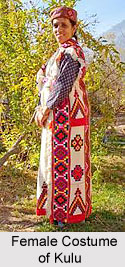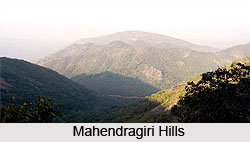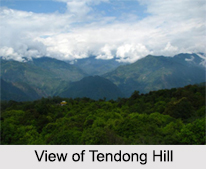 Culture of Kullu deals with the fairs and festivals of the region which are prominent scenes in this land of tribal hills, Himachal Pradesh.
Culture of Kullu deals with the fairs and festivals of the region which are prominent scenes in this land of tribal hills, Himachal Pradesh.
The dresses, jewelleries, flowers etc make the land very colourful. In all the festivals the local people organize fairs in which they pay homage to their local gods. They offer puja to their Gods because of the enhancement in their crop, rain, etc.
They also worship God in case of birth of a son and recovery from sickness, etc. their social and cultural life revolves around their Gods and Goddesses. There are numbers of Gods worshipped by different people. Because of this reason Kullu can also be called as the land of Gods.
People of Kullu
Some characteristics of the residents of Kullu can be mentioned as truthfulness, their simplicity, hospitality, etc. the people living there are very helpful, they have self-respect. They come forward to help any one. They are attracted to flowers, festivals, dances and colorful occasions. They believe in total literacy and in this process they also improved their economic condition. The primary occupation of these people can be said as agriculture and horticulture. But in present days people are often seen engaged in other profession like tourism and hotel business.
Costume of Kullu
Kullu is a cold place and that is why people should wear warm clothes throughout the year. Previously the men folk were more interested in their traditional clothes like chola, dora, suthan, topa with folded binket i.e. "lachhoo" but in these days they are inclined to pants and shirts. The women still wear blanket or patto over their dress. Among the special dresses that are worn at the time of festivals "phoolwala" blanket is important. As headdress Dhatu and Thilu are important. This is regarded as the cottage industry of Kullu. There are 300 co-operative industries present here only because of this purpose. About 30000 workers have been earning their living directly or indirectly from it. Till now about Rs.25 crores have been invested in it. Kullu shawl is known for its quality, design and reasonable cost. These shawls are made out of the imported yarn in different colours and designs. There are some shawls, which are too some extent low in price because of their less work in the body. Kullu pattoo is something heavier and larger than a shawl. These are very beautiful in their look. Kully women are usually very fond of pattoo. They use this over their clothes and pin at both the ends. There is one needle known as Boomani, which is an important part. This is used below the shoulders. All of these are essential part of their dress. Plain Chitru and are generally very popular. The cost of this varies with the superiority of its design and also colour scheme. The bed blankets are usually rough and heavier. These are called as `Dohru`.
 Ornaments of Kullu People
Ornaments of Kullu People
Both men folk as well as womenfolk used the ornaments in earlier days. But womenfolk are still using these with full pride. They usually use gold and silver ornaments. Women used a long variety of jewelleries, which includes a long list. Among nose rings Laung i.e. a nose stud Kumshi, Balu, etc. are important. Among head ornaments Tunki, Tara, Tikka are notable. Khundi and Bali are Ear ornaments.
Chanderhat, Jaumala, Champakali, Damku Skkamala i.e. garland of coins, Guthi or ring, Mundri, Bichhwa. Taka, Kangnu, Maritadi, Tore and Boomani i.e. silver or gold needles with chains are different neck ornaments. The other interesting ornaments are finger ornaments, arm ornaments and ornament for blanket.
Dances of Kullu
Dance takes an important part in the lives of Kullu people. They do not miss any opportunity to dance and thus they dance on all fairs, festivals and happy occasions. They dance in a circle in the accompaniment of band of musicians. Dancing usually followed with singing. On special occasion, dancers wear special dresses. Both women and men take part in the dance. The most popular dance of Kullu is `Nati`. Different dances have different steps and theta is why variety can be maintained. Some different forms of dances can be mentioned as Dhili Nati, Pheti nati, Dohri nan, Banthara, Luddi, Lamber, Pekha, Sangla, Lahalri, Hulki, Bakhali, Rujhanka, Lahuli, Chambyali, Kharyat etc.
Orchestra of Kullu
Generally seven to nine musical instruments used in the Nati orchestra. The following can be named as the most used musical instruments. The pipe or shehnai,The drums or dhol, Nagara and dhauns,Trumpets or kamal, Ranshringa,Bhana or A bronze round disc struck with a stick, etc. This piper or "hesi" leads the orchestra. Any desired changes in the orchestra or any dance movement are initiated by him only.
Folk Songs of Kullu
Kullu folk songs are very melodious. They have their own meaning that is very simple to understand. The subjects of the songs touch all aspects of life. As they contain story and beautiful tunes they became very popular among the folks. These help the people to forget their sorrow and mingle with the society. There are songs for every mood. In addition to the folk songs, `Liunan and Bhourun` are also sung. These are sung on the occasion of fairs and festivals in the fields, etc. the subject of Laman deals with love while the main theme of Bhouran is hope, frustration. Separation, reproach, sarcasm, etc. an open vast place is generally required to sung all these are they are sung in moderately high pitch. Al these are sung by one only. The style is little different from other folk songs.
Art and Craft of Kullu
 Art and craft takes an important part in kullu people`s life. The handicrafts are very in thing in these areas. Shawls, mufflers, caps, conical baskets, poolas and jackets made by local people always help to increase the economic condition of the place. They are made by thousands of craftsmen spread all over the valley. Kullu shawls, muffiers and caps have also won international fame. As a whole these are very colourful and one of the reason to make the place popular.
Art and craft takes an important part in kullu people`s life. The handicrafts are very in thing in these areas. Shawls, mufflers, caps, conical baskets, poolas and jackets made by local people always help to increase the economic condition of the place. They are made by thousands of craftsmen spread all over the valley. Kullu shawls, muffiers and caps have also won international fame. As a whole these are very colourful and one of the reason to make the place popular.
Kullu Procession
This is usually a procession of Kullu gods. The making of Namdas is the process by beating the wet wool. These are very durable and warm. No embroidery is done on Kullu namdas. Gudmas are made of thick yarn of `Biyang wool`. After weaving, both sides of the gudmas are combed to make it soft and hairy. Its border is stitched by a co lowered Dora. These items of handicrafts are prepared by the Himachal Khadi Manadal.








